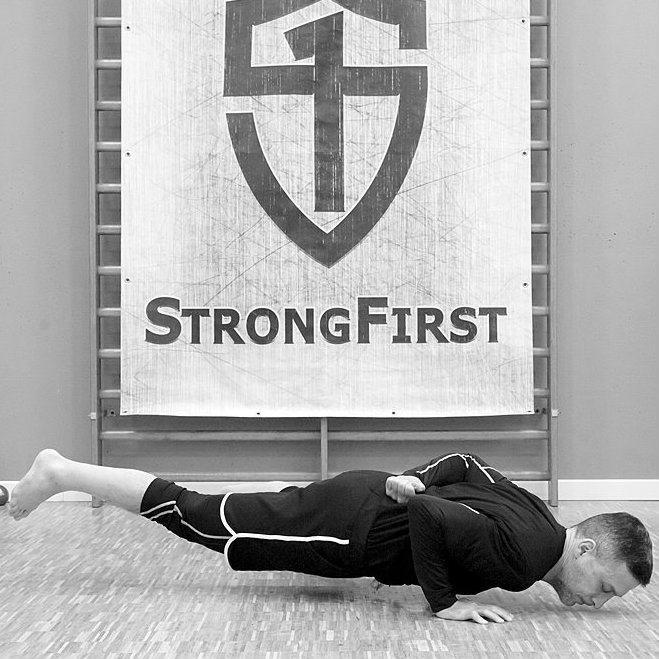Since I achieved 1ArmPU (not the SF standard, more of a "torsion" 1ArmPU), I thought I will go for a
ring-grip pushup.
It's totally beyond my ability at the moment. What would be a realistic regression for this exercise?
My gueeses would be standard ring push-ups, then ring dips maybe?
I don't fully understand why a non-strict one-arm pushup is inherently detrimental to the body. Could you explain your standpoint? To be sure we're talking about the same thing, here's an
example video (I mean body positioning of course, not the use of neuro-grips and medicine ball).
I see opinions on usefulness of the exercise are divided here. I got this idea since I noticed some people I follow doing push ups on neuro grips, which are not accessible in my country. However, I saw
Daniel Strauss recently replacing neuro grips with two hammers. Do you think they would be safer than rings for the start?
I won't venture into the "is it good or not?" here except to say that, if you like it, if you don't get hurt doing it, which is the biggest "IF", if you don't hurt others doing it, and it doesn't make you weaker, I say you should go for it.
It must be said that the floor surface material and the ring material are going to be noticeable variables here. Some kind of slightly sticky floor surface with a little, but not too much, give will make this at least a little less difficult.
My vote goes to the renegade row. (Renegade Row - caps?) The risk of injury exists there, too, without a doubt, but some of the tips and tricks for that movement will help you with your ring pushups. And - don't say you heard it from me, please - you could use lighter and lighter kettlebells, which would provide less and less stability, as your progression. And just like the starting position of a Renegade Row is also a place from which you can do a 2-handed pushup, doing that will also help you towards your 2-handed ring pushup. Let's note however, that the only resemblance to a Renegade Row is, well, there isn't, really. You're just using kettlebell instead of rings for your pushups.
If you could find smaller rings, that would also be a progression to bigger ones. E.g., try the wheels from an ab wheel you can disassemble. They'll be more stable than rings.
The funniest thing about all this for me was right at the beginning, as the guy in the video was saying he used these to recovery from broken fingers, an injury you could 'achieve' by doing all these things, not to mention broken wrists, face plants.
-S-

